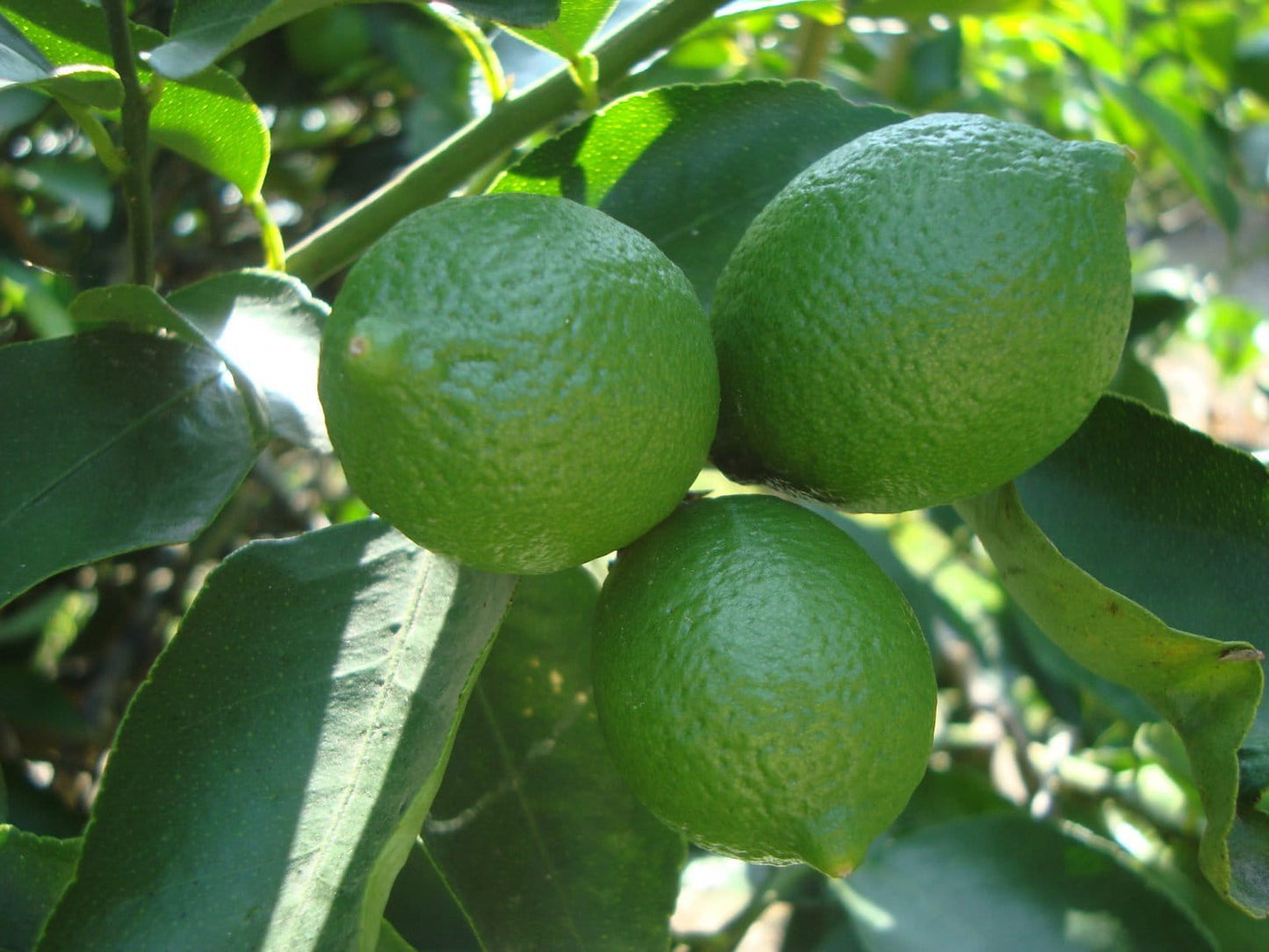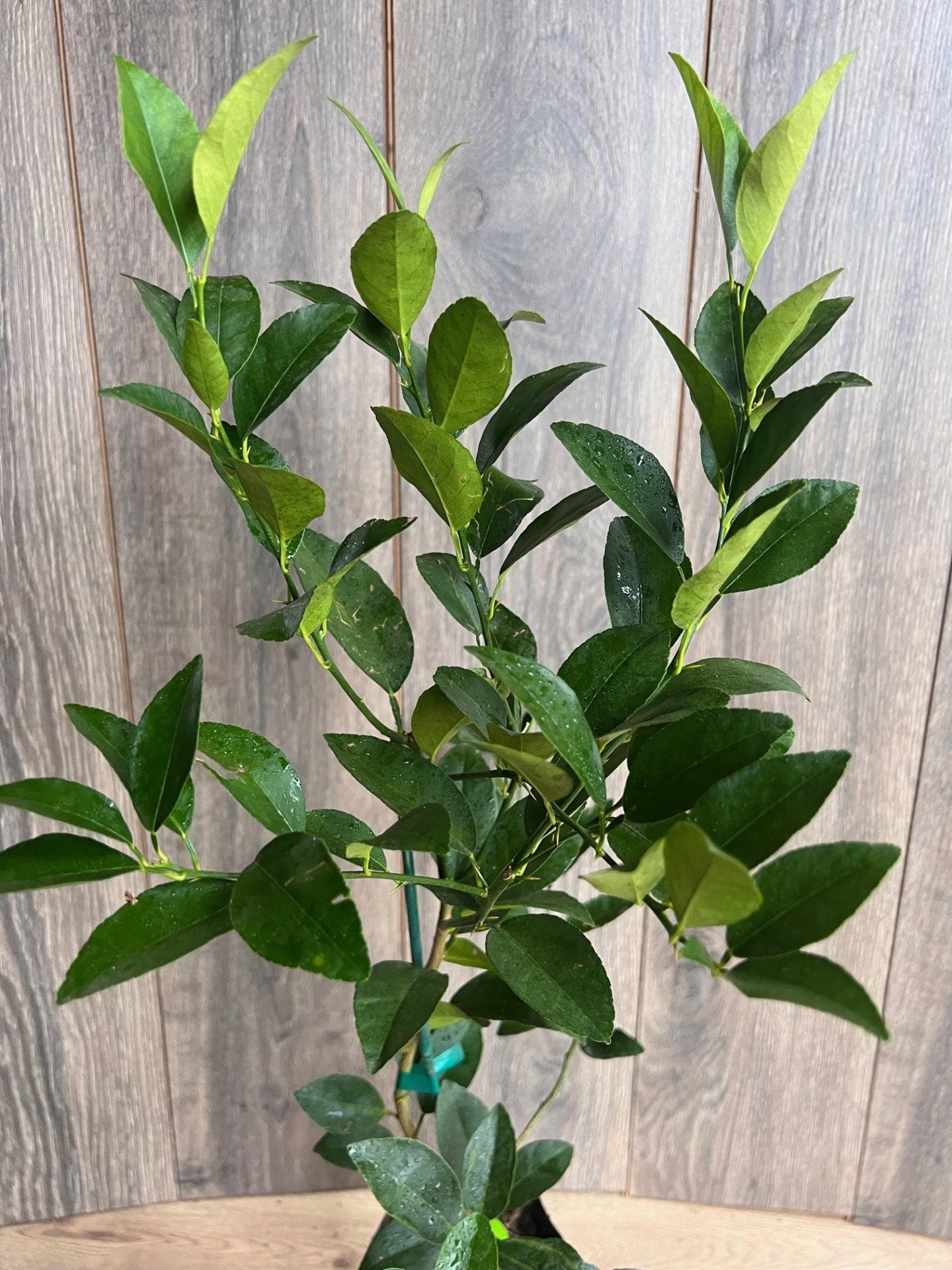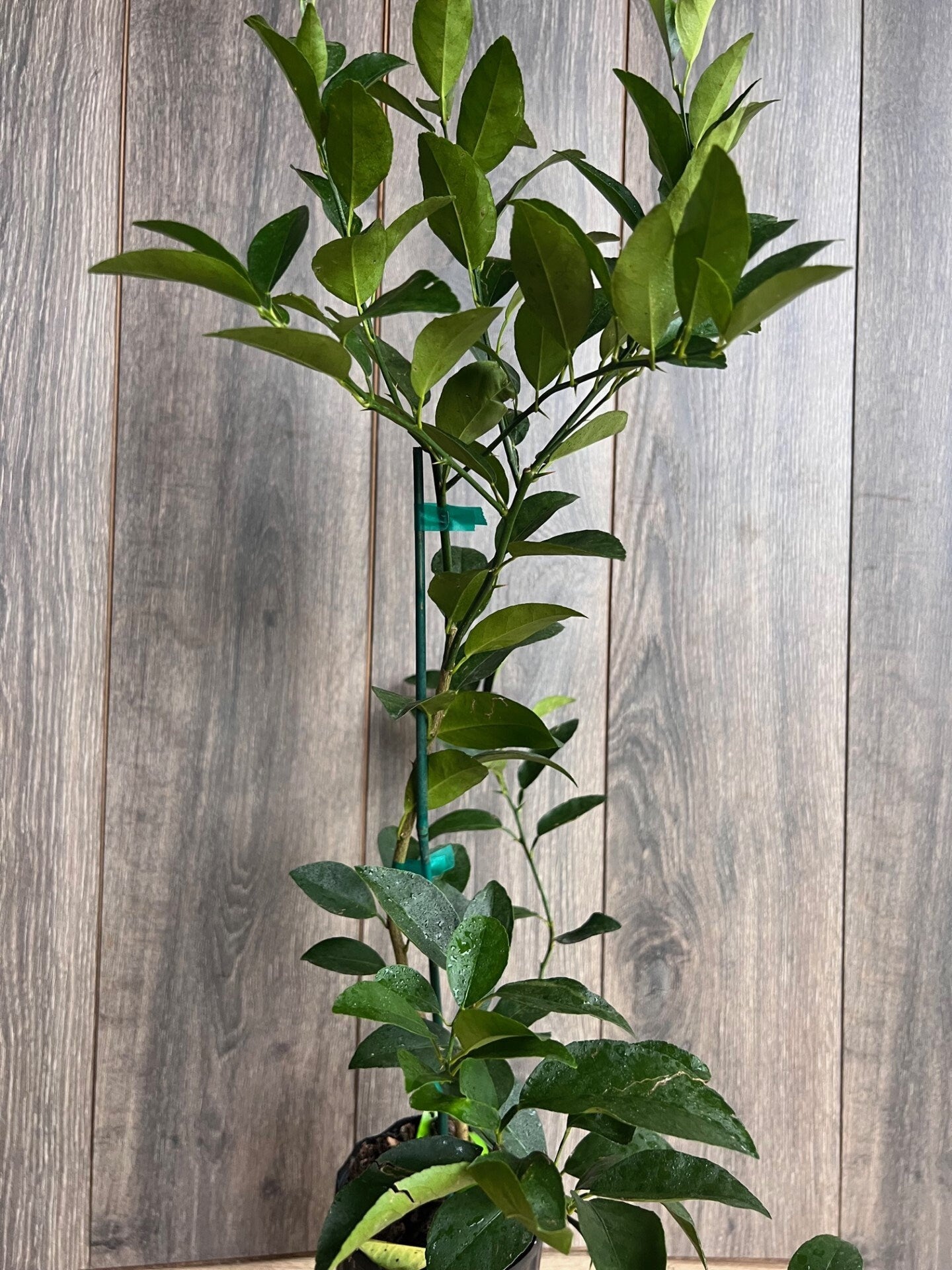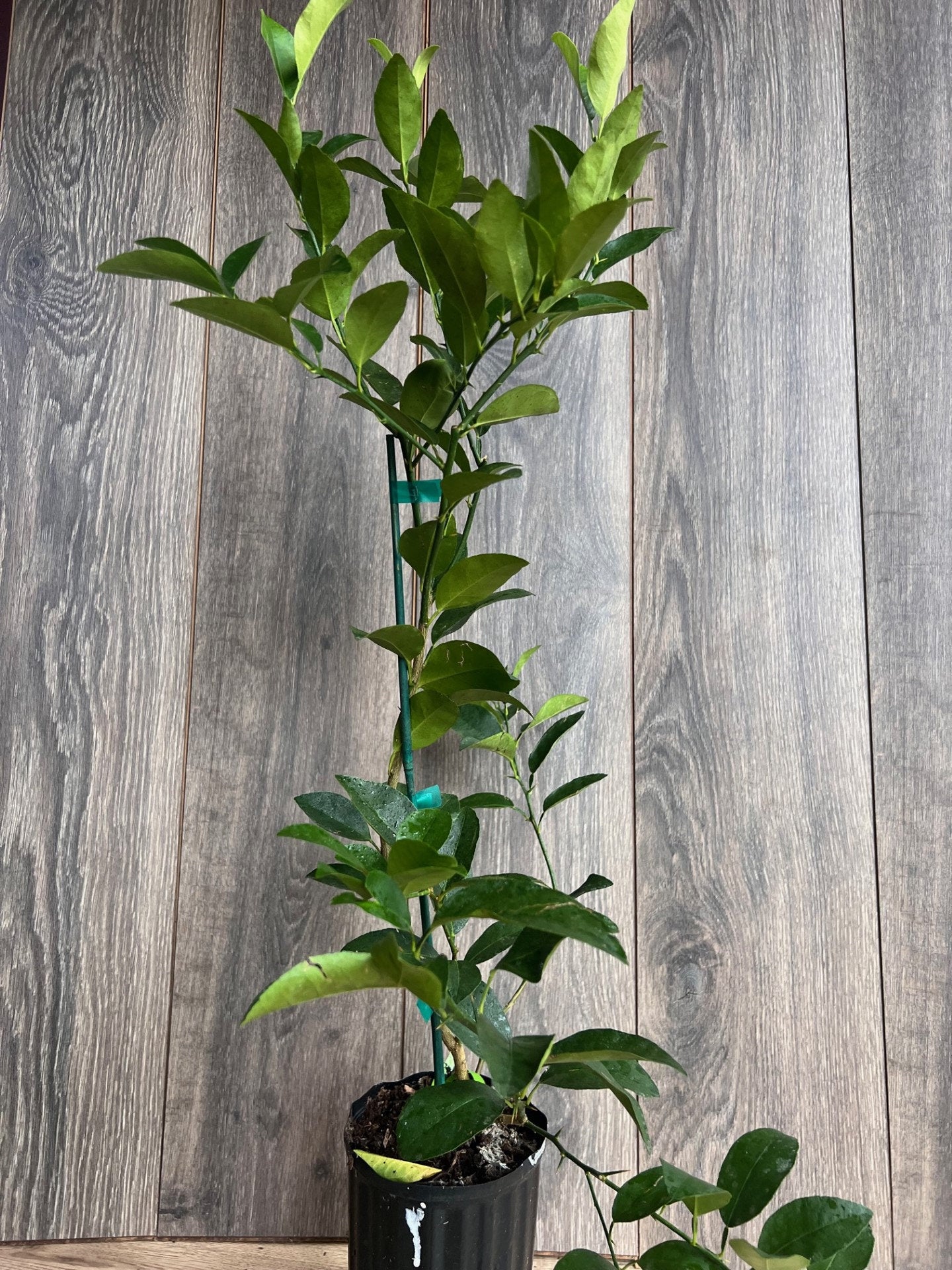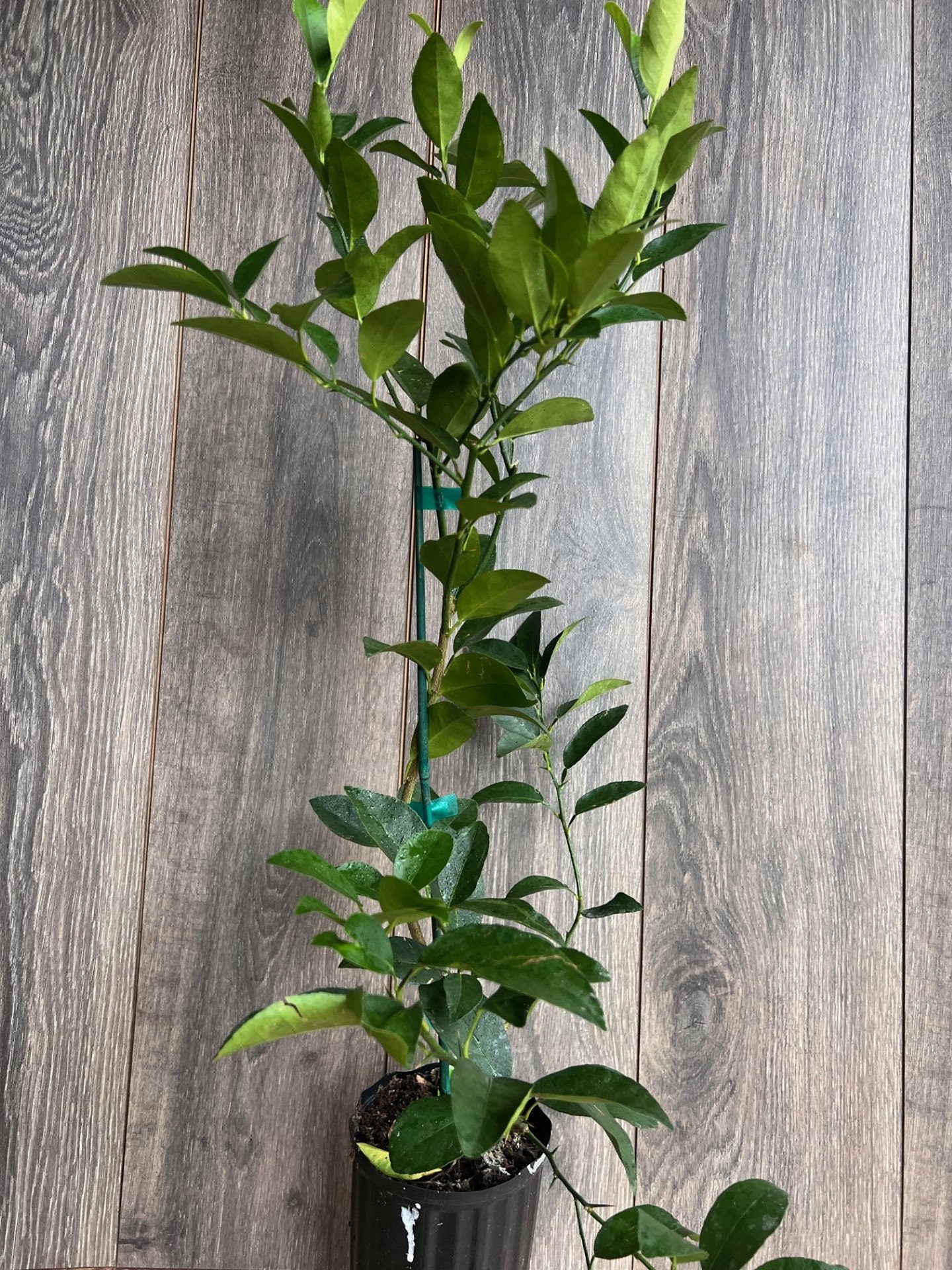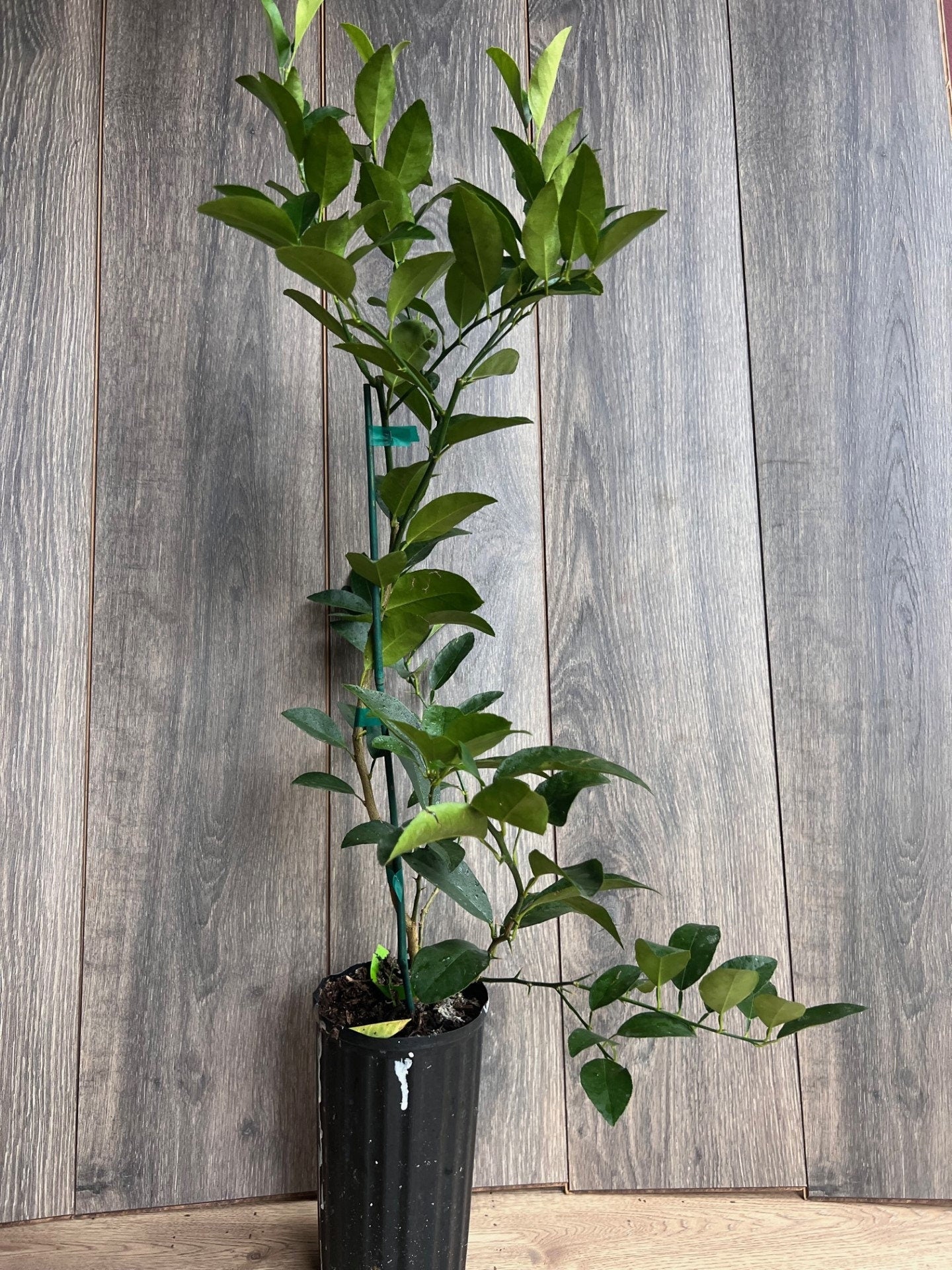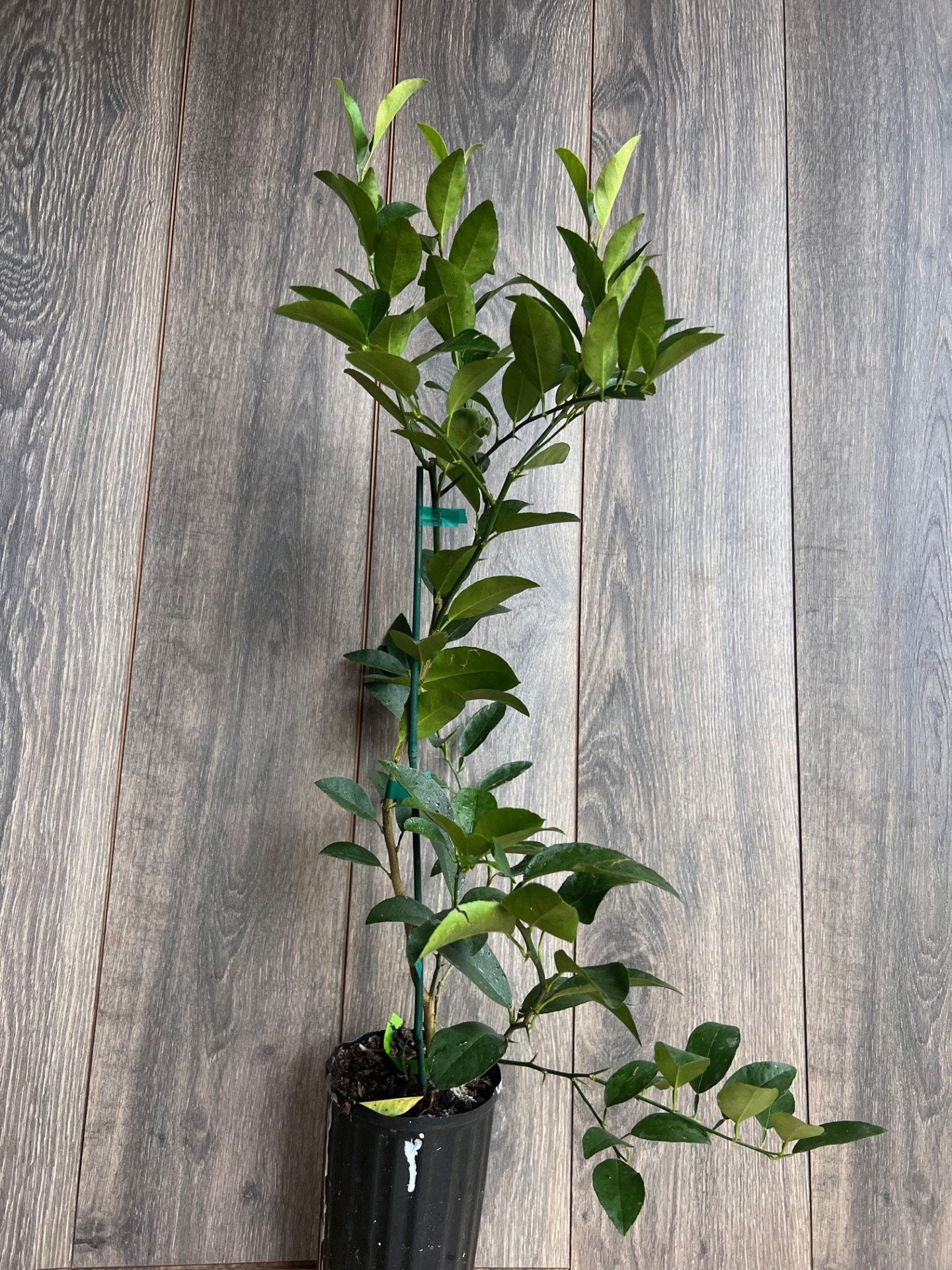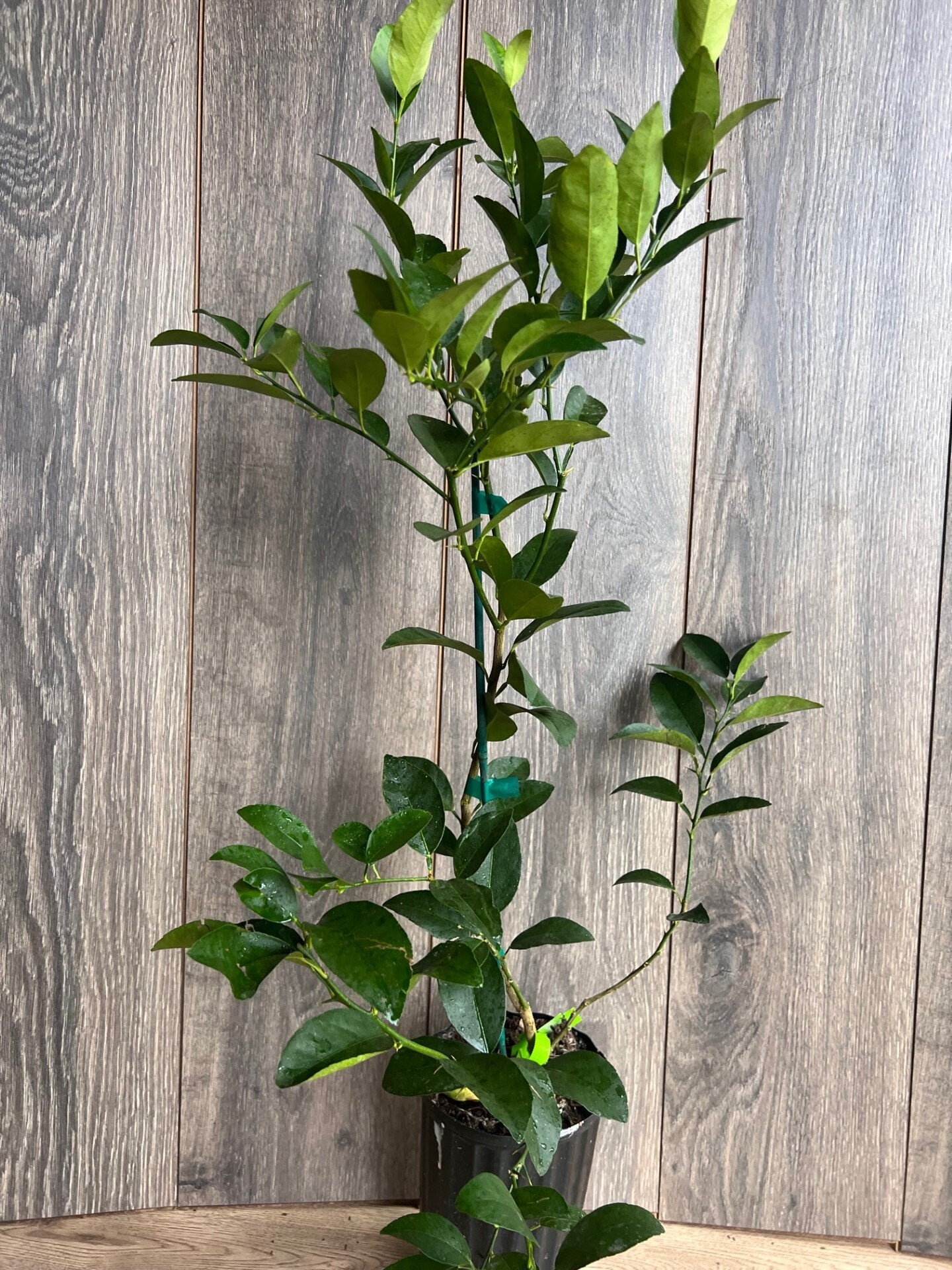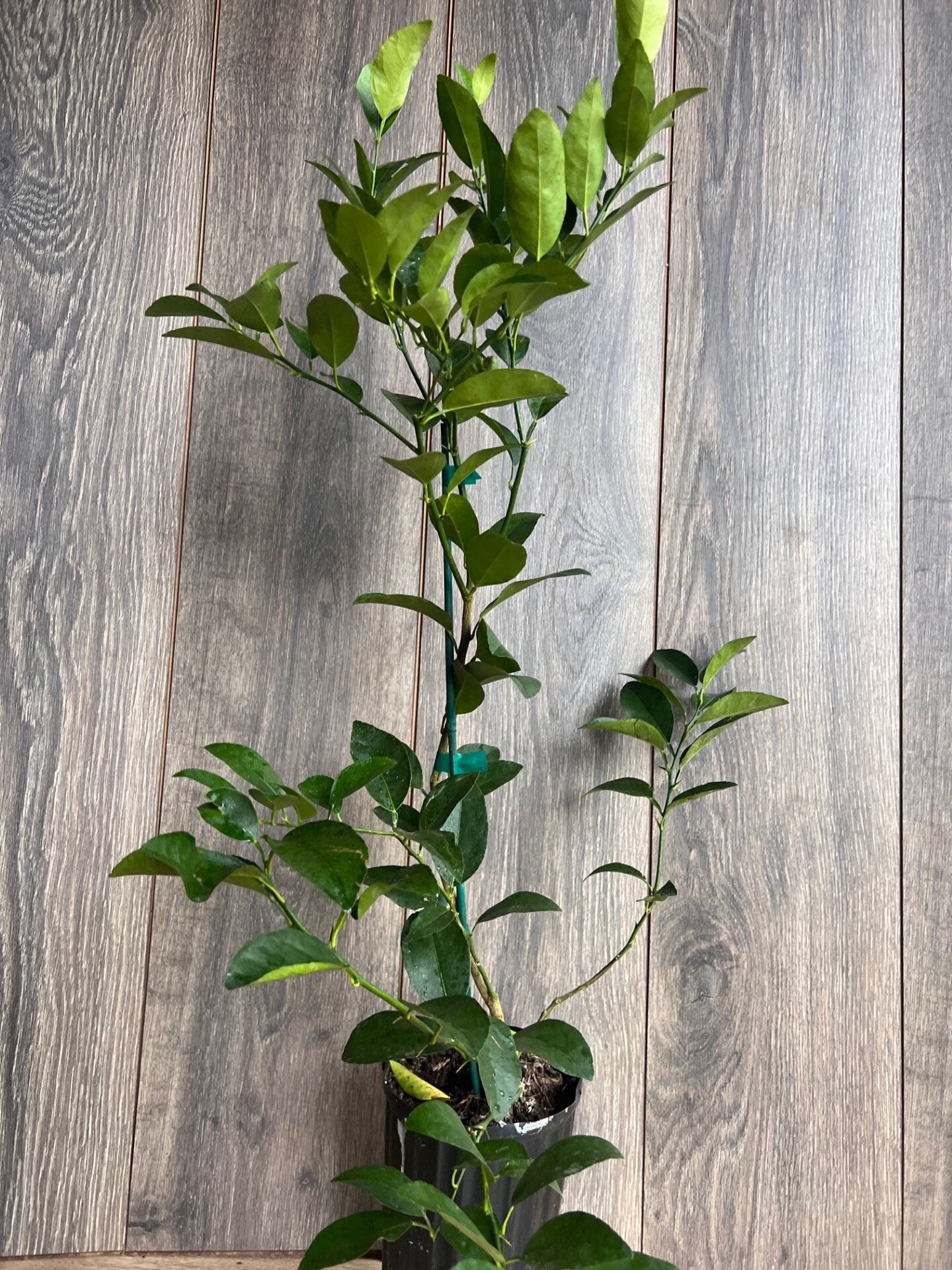Persian lime Treein half Gallon Pot, Grafted, Cirus x Latifolia, Bearss Lime, Tahiti Lime, Florida Shipping Only
Persian lime Treein half Gallon Pot, Grafted, Cirus x Latifolia, Bearss Lime, Tahiti Lime, Florida Shipping Only
Couldn't load pickup availability
Note: You will receive one Persian Lime1/2 Gal pot similar to the pictures
Persian Lime (Citrus latifolia), also known as Tahiti lime or Bearss lime, is a popular variety of lime prized for its large, seedless, juicy fruit and milder, less acidic flavor compared to other lime varieties, like Key limes. The fruit is typically harvested while green, turning yellow when fully ripe. Persian limes are known for their smooth, thin skin, making them easier to juice than thicker-skinned varieties. These limes are versatile in culinary applications, used in drinks like margaritas, desserts, marinades, and salads. The evergreen tree thrives in warm, tropical to subtropical climates (USDA zones 9-11) and is self-pollinating, though nearby pollinators can increase fruit yield. Persian lime trees are often grown in containers in cooler climates, while they flourish outdoors in full sun and well-draining soil.
Care Guide for Persian Lime
1. Light Requirements
- Full Sun: Persian lime trees need at least 8 hours of direct sunlight daily to grow well and produce fruit. Place the tree outdoors in a sunny garden spot or on a sunny balcony for container-grown trees.
- Indoor Care: For indoor growth, place the tree near a south- or west-facing window. If sunlight is limited, consider supplementing with a grow light, especially during winter.
2. Watering
- Consistent Moisture: Persian lime trees prefer consistently moist, well-drained soil. Water deeply when the top 1–2 inches of soil feel dry.
- Avoid Overwatering: Ensure the tree is in well-draining soil and a pot with drainage holes. Allow the soil to dry slightly between waterings to prevent root rot.
3. Soil Requirements
- Well-Draining, Slightly Acidic Soil: Persian lime trees thrive in slightly acidic soil (pH 5.5–6.5) that drains well. Use a sandy, loamy mix for containers or amend garden soil with organic matter for improved drainage.
- Container Soil: For container trees, use a specialized citrus mix or combine regular potting soil with sand or perlite for better drainage.
4. Temperature
- Warm Temperatures: Persian lime trees thrive in temperatures between 70°F and 85°F (21°C to 29°C). They can tolerate brief periods of higher heat but need protection from temperatures below 50°F (10°C).
- Cold Sensitivity: Persian limes are frost-sensitive. Protect outdoor trees from frost with frost cloth or bring container trees indoors when temperatures drop below 50°F (10°C).
5. Humidity
- Moderate to High Humidity: Persian lime trees prefer moderate to high humidity, especially when grown indoors. If the air is dry, particularly in winter, use a humidifier, mist the tree, or place it on a humidity tray to increase moisture.
6. Fertilizing
- Balanced, Slow-Release Fertilizer: Use a balanced, slow-release citrus fertilizer during the growing season (spring through late summer) to promote healthy growth and fruit production.
- Avoid Over-Fertilizing: Over-fertilizing can lead to excessive leaf growth at the expense of fruit. Reduce fertilizing in fall and winter when the tree's growth slows.
7. Pruning
- Light Pruning: Prune Persian lime trees to remove dead, diseased, or damaged branches. Pruning improves airflow and encourages better fruiting.
- Maintain Size: For container trees, prune to control size and prevent legginess. Always use sharp, clean pruning shears to avoid damaging the tree.
8. Pollination
- Self-Pollinating: Persian lime trees are self-pollinating, so they can produce fruit without another tree. However, having other citrus trees nearby can improve fruit yield.
- Encourage Pollinators: Outdoors, plant flowering plants nearby to attract bees and other pollinators. Indoors, you can gently shake the tree or use a small brush to transfer pollen between flowers.
9. Fruit Care
- Harvesting: Persian limes typically ripen in late spring to early summer. They are often harvested while still green, as they are usually consumed at that stage. The fruit will become slightly yellow when fully ripe, but should still be firm and blemish-free when picked. Use sharp scissors or shears to harvest without damaging branches.
- Fruit Storage: After harvesting, store Persian limes at room temperature for up to a week, or refrigerate them in a plastic bag for up to 2–3 weeks.
10. Pests and Diseases
- Common Pests: Persian lime trees can attract aphids, spider mites, mealybugs, and scale insects. Regularly inspect the tree for pests and treat infestations with insecticidal soap or neem oil as needed.
- Diseases: To prevent fungal infections like citrus canker or powdery mildew, ensure good airflow and avoid overhead watering. Proper soil drainage is also essential to prevent root rot.
11. Repotting
- Repotting Container Trees: Repot Persian lime trees every 1-2 years or when the roots outgrow the container. Choose a slightly larger pot with drainage holes and refresh the soil with a citrus-specific mix to promote healthy root growth.
Share
